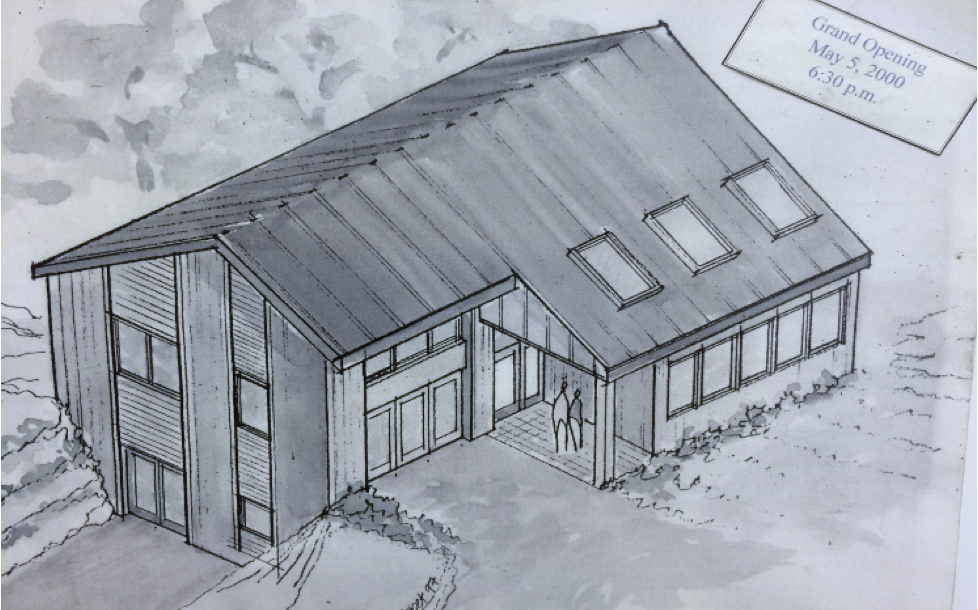History
The Audubon Center for Native Plants initiative is rooted deep in the history and operations of Audubon Society of Western Pennsylvania (ASWP). What began as a plant rescue in the late 80’s, has flourished into a conservation initiative with a dedicated 1200 sq. ft. facility, 1-acre nursery and one full-time staff member.
Rewind a few decades to 1985. I-279 in Pittsburgh was being expanded northward, with a long-awaited “Parkway North” connecting the north shore to the north hills. In its path, several pockets of diverse hillsides and valleys containing populations of native plants such as Large-flowered Trillium, Trout Lily, Dutchman’s Breeches and Round-lobed Hepatica. ASWP volunteers leaped into action, rescuing as many plants as possible and transplanting them to Beechwood Farms Nature Reserve.
Within the following years, volunteers monitored, cared for, and began collecting seed
from the rescued ambassadors. They soon began propagating plants from the seeds they collected, making them available for purchase at the nature reserve. Plants were also soon made available to schools, through ASWP’s popular School Ground Habitat Enhancement and Restoration Program. Plant sales became popular and the demand for natives was becoming obvious. ASWP was beginning to reach more people than ever, educating about the importance of using native plants in the landscape. The number of plants and diversity of species quickly outgrew the small space they were allotted. It was time to take a major step toward theconservation and education of these important plants.
 In May, 2000, ASWP celebrated the grand opening of its Audubon Center for Native Plants (ACNP). The 1,200 square foot facility provided dedicated space for the propagation of and education about native plants. Featuring green building elements such as straw-bale insulation, radiant floor heating and full-spectrum glass skylights, the building included a greenhouse, an office, a resource library and a large, open multi-purpose room. The area in front of the facility was converted to display gardens, while 40,000 square feet of space behind the facility was developed as outdoor nursery space.
In May, 2000, ASWP celebrated the grand opening of its Audubon Center for Native Plants (ACNP). The 1,200 square foot facility provided dedicated space for the propagation of and education about native plants. Featuring green building elements such as straw-bale insulation, radiant floor heating and full-spectrum glass skylights, the building included a greenhouse, an office, a resource library and a large, open multi-purpose room. The area in front of the facility was converted to display gardens, while 40,000 square feet of space behind the facility was developed as outdoor nursery space.
ACNP benefitted greatly from volunteer involvement. In the years following the opening of the facility, an annual average of 2,500 volunteer hours was contributed. Under the direction of ASWP staff, volunteers collected seeds, divided plants, propagated and cared for a growing number of plants. By 2010, the ACNP was capable of propagating 100 species of native plants (plants originally found in the Appalachian plateau prior to European settlement) and had an average of 5,000 plants on hand at any given time.
With the complexities of managing an inventory of plants, it became clear that the
next step in the native plant initiative was a dedicated employee. In spring of 2010, ASWP developed the Native Plant Coordinator position and filled it with a candidate with both nursery and education experience. The creation of the position has enabled ASWP to expand its relationships with partners throughout western Pennsylvania.
In recent years, plants have been made available to state park projects, forest service projects, restoration efforts, storm water remediation projects, municipal gardens, master gardener projects, garden club projects, as well as multiple projects on ASWP properties. ASWP’s native plants are made available for sale from May through October at Beechwood Farms Nature Reserve at the newest addition to the project – Betsy’s Garden Shoppe.

 In May, 2000, ASWP celebrated the grand opening of its Audubon Center for Native Plants (ACNP). The 1,200 square foot facility provided dedicated space for the propagation of and education about native plants. Featuring green building elements such as straw-bale insulation, radiant floor heating and full-spectrum glass skylights, the building included a greenhouse, an office, a resource library and a large, open multi-purpose room. The area in front of the facility was converted to display gardens, while 40,000 square feet of space behind the facility was developed as outdoor nursery space.
In May, 2000, ASWP celebrated the grand opening of its Audubon Center for Native Plants (ACNP). The 1,200 square foot facility provided dedicated space for the propagation of and education about native plants. Featuring green building elements such as straw-bale insulation, radiant floor heating and full-spectrum glass skylights, the building included a greenhouse, an office, a resource library and a large, open multi-purpose room. The area in front of the facility was converted to display gardens, while 40,000 square feet of space behind the facility was developed as outdoor nursery space.